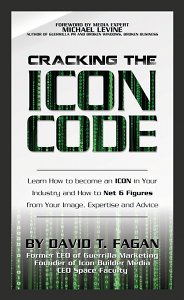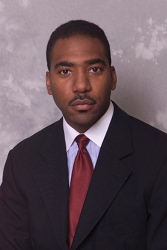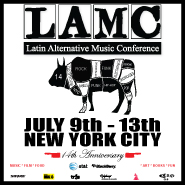Posted by Elena del Valle on June 14, 2013

Cracking The Icon Code
Photo: David Fagan
Influence, credibility and exposure combined can act as catalysts to success for business leaders who know how to leverage them, according to David T. Fagan, author, Cracking The Icon Code Learn How to Earn an Icon Status and How to Net 6 Figures from Your Image, Expertise and Advice (On the Inside Press, $14.95). He believes it’s good to establish complimentary relationships but that at the end of the day it’s a free capitalist market and competition is necessary.
In the book, he goes on to say that people who sell a product or service for a living need to establish good contacts and show their clients what makes them worth buying from compared to doing nothing or buying from a competitor. Being bold, causing a little controversy and speaking out about a topic can be beneficial, the author points out.
The more someone can do for others the more influential he or she is, he says in Chapter 4 where he provides a test for readers to determine their Icon Influence Factor. To lead, he points out, it’s necessary to have a high score. In the same chapter he has Credibility Competency Score and Exposure Energy Score tests. He dedicated two chapters to websites as marketing tools and discusses the value of media, writing a book and other ways a reader may spread his reputation as an icon.
The 157-page softcover book published this year is divided into 40 short easy-to-read chapters. Fagan is former chief executive officer of Guerrila Marketing. Books he authored or co-authored include: Guerrilla Rainmakers, The Inside Drive, How to Raise an Entrepreneur, Secrets of Peak Performers, Mad Ads: Madison Avenue Advertising on a Main Street Budget, and Zero to Hero in 90 Days or Less.
Comments:
Filed Under: Books
Posted by Elena del Valle on June 10, 2013

Hamilton Brown, senior brand manager, Procter and Gamble Company
Photo, videos: Fleishman-Hillard Miami, Procter and Gamble Company
A podcast interview with Hamilton Brown, senior brand manager, Procter and Gamble Company, is available in the Podcast Section of Hispanic Marketing & Public Relations, HispanicMPR.com. During the podcast, he discusses the first Gain web novela with Elena del Valle, host of the HispanicMPR.com podcast. Scroll down to watch behind the scenes video of the filming of Aroma de Amor in Spanish.
Hamilton leads the Gain Fabric and Home Care Megabrand with sales of over $1.5 billion dollars. He is responsible for the delivering business, sales, volume and profit objectives, development of business strategy, advertising, and leading multifunctional teams to deliver consumer inspired innovation to the marketplace.
His previous assignment was as global brand manager of Old Spice.
Hamilton’s business leadership accelerated the brand’s global footprint through the delivery of product innovation and advertising campaigns that drove share growth around the world. He was the co-creator of The Man Your Man Can Smell Like concept featuring Isaiah Mustafa which won five Cannes Lions. Prior to his career at Procter and Gamble, he worked as an architectural engineer for four years with the SmithGroup. Hamilton is a resident of West Chester, a suburb of Cincinnati, Ohio.
To listen to the interview, scroll down until you see “Podcast” on the right hand side, then select “HMPR Hamilton Brown” or click on the play button below. You may download the MP3 file to your iPod or MP3 player to listen on the go, in your car or at home by clicking on “Get HMPR Podcast” above the podcast player. The podcast will remain listed in the June 2013 section of the podcast archive.
Posted by Elena del Valle on June 7, 2013

Outsource Smart book cover
Photo: McGrall Hill
Daven Michaels, founder and chief executive officer, 123Employee, believes paying consultants outside a company to do work owners and managers can’t or don’t want to do will save the company time and money. In Outsource Smart Be Your Own Boss without Letting Your Business Become the Boss of You (McGraw Hill, $22) he explains his thinking. The more an executive can delegate, the better he says in the book. And, the more work a company can hire out the more money it saves on employee costs. In his book, he proposes that for every task there is a contractor available.
The 226-page softcover book published this year is divided into twelve chapters: The Outsourcing Paradigm, The New Definition of Insanity, Outsourcing 101, How to Hire and Train an Outsource VA, Legal and Financial Realities: How To Manage an Outsourced Virtual Assistant, The Marketing Funnel: Outsourced List-Building and List Creation, Outsourced Website Creation and Maintenance, Outsourced Article Marketing and Blogging, Outsourced Video Marketing, Outsourcing the Google Ranking Race, Quality Control in Bad Times, Quality Control in Good Times.
The author reasons that an executive who is working 16 hours a day should delegate or outsource any task below his pay grade. The alternative is that he is working extra hours at minimum wage performing tasks someone else could be doing more profitably. The top outsourcing countries, according to Michaels, are India, Philippines, Canada, Ireland and Russia followed by China, Mexico and South Africa. Each region, he explains, has areas of specialization.
Comments:
Filed Under: Books
Posted by Elena del Valle on June 3, 2013

Kaye Sweetser, Ph.D., professor, HW Grady College of Journalism and Mass Communication, University of Georgia
A podcast interview with Kaye Sweetser, Ph.D., APR, associate professor, University of Georgia Grady College, is available in the Podcast Section of Hispanic Marketing & Public Relations, HispanicMPR.com. During the podcast, she discusses using social media to build business with Elena del Valle, host of the HispanicMPR.com podcast.
As an associate professor of public relations at the HW Grady College of Journalism and Mass Communication Dr. Sweetser’s research focuses on the use of Internet technology in political public relations and communication. Specifically, she has researched digital tools like Twitter, Facebook and blogs with regard to the personalization they offer organizations. She has looked at this in public relations contexts as well as in political campaigns. In addition to a rich life in academia, she keeps one foot squarely in the day-to-day practice of public relations through her affiliation with the U.S. Navy as a drilling reservist. In 2011, she was deployed to Afghanistan where she worked the news desk for the war and served as a NATO spokesman for important world events such as the death of Osama bin Laden.
During her time at war, she was able to serve as an adviser to the government of Afghanistan sharing her knowledge about social media and its best practices from a government communication standpoint. She held large group training sessions with government communication officials as well as one-on-one sessions with the spokesman for the Ministry of Interior. She regularly turned to Twitter as an information dissemination tool during crisis. Kaye earned her doctoral degree from the University of Florida. She has been at the University of Georgia since 2006.
To listen to the interview, scroll down until you see “Podcast” on the right hand side, then select “HMPR Kaye Sweetser, Ph.D.” click on the play button below. You may download the MP3 file to your iPod or MP3 player to listen on the go, in your car or at home by clicking on “Get HMPR Podcast” above the podcast player. The podcast will remain listed in the June 2013 section of the podcast archive.
Posted by Elena del Valle on May 24, 2013

Innovate Products Faster book cover
Photo: TCGen Press
Developing new products does not require a slow and ineffective process. In Innovate Products Faster: Graphical Tools for Accelerating Product Development (TCGen Press, $19.95), John Carter and Jeanne Bradford, chief executive officer and principal respectively of TCGen Inc., make the case that companies can have innovation and speed. To do so, they say, it is necessary to have mastery of tools and methodologies that will support managers in making better decisions faster. They say the tools available should be those that can be quickly understood and implemented. They should be “tactically straightforward, but strategically powerful and can be applied across different industries and organizations, from start-ups to Fortune 100 companies,” according to the consultants.
For managers and their teams they propose a Product Innovation Process they have refined and tested with 50 clients. It has three checkpoints, Concept Check-In, Product Check-In, and Release Check-In, or defined interactions between the management and the core cross-functional development teams.
They serve as peer-to-peer discussions rather than critical, hierarchical, and stress-filled reviews. Carter and Bradford outlined five core disciplines and subsets of best practices for each one. The chapters, each dedicated to a single best practice, are divided into three parts: a description, a graphic and a fictional case study. The authors indicate the best practices apply to hardware, software, cloud, device or service development. They rely on three fictional companies to illustrate the case studies outlined throughout the book.
The 240-page soft cover book is divided into an Introduction and four sections: Strategy, Management, Execution, Organization, and Process. The authors suggest readers start at the Appendix where they list the solutions for the most common problems.
Carter, founder of the company, has advised technology firms such as Apple, Cisco, NetApp and IBM, over a 35-year career. He serves on the Board of Directors of Cirrus Logic. He has raised private equity to successfully execute a roll-up in the Consumer Electronics sector and has assumed senior executive roles.
Comments:
Filed Under: Books
Posted by Elena del Valle on May 20, 2013

John Teeuws, VP, Pulpo Media
Photo: Pulpo Media
A podcast interview with John Teeuws, vice president, Pulpo Media, is available in the Podcast Section of Hispanic Marketing & Public Relations, HispanicMPR.com. During the podcast, he discusses communicating effectively with Hispanics online with Elena del Valle, host of the HispanicMPR.com podcast.
John manages sales to major US agencies and accounts. Prior to working at Pulpo Media he worked with the sales teams at Tribal Fusion, Spot Runner, Placecast, and Stack Media. John began his advertising sales career at The Washington Post Company where he managed the Company’s Global/International and Recruitment/Jobs Advertising divisions.
Prior to entering a career in advertising, John worked in international affairs, trade and investment primarily focused on the Asia Pacific Market for the US ASEAN Business Council, the US-Philippine Business Committee and the Chief Executives Organization.
To listen to the interview, scroll down until you see “Podcast” on the right hand side, then select “HMPR John Teeuws” click on the play button below. You may download the MP3 file to your iPod or MP3 player to listen on the go, in your car or at home by clicking on “Get HMPR Podcast” above the podcast player. The podcast will remain listed in the May 2013 section of the podcast archive.
Posted by Elena del Valle on May 17, 2013

Pinterest for Business book cover
Photos: Karen Leland
Karen Leland, owner of a branding and marketing firm, believes in the power of Pinterest. People love pictures, she says. She points to recent studies that indicate that nearly 20 percent of women using the Internet are on Pinterest, 72 percent of Pinterest users are women, 66 percent of those are age 35 or older, and the average amount of time visitors spend surfing the Pinterest site is an hour.
In Entrepreneur Magazine’s Ultimate Guide to Pinterest for Business, a 189-page soft cover book published this year, she set out to create an easy-to-use guide to Pinterest as a valuable source of prospects, promotion and profits. The book that retails for $21.95 is divided into 17 chapters.
“Great business brands are about telling compelling, congruent stories, and Pinterest is at its core about storytelling in pictures,” said Leland in a press release. “Pinterest has tapped into this visceral lover of visuals, and no small business, entrepreneur or corporation can afford to miss the boat on bringing what they offer beyond words and into images.”
She begins the book by pointing out that the popular social media website is the fastest growing social media website in history. It had 10 million users when she wrote the book. Her promise to readers is: to show them the basics of getting started in Pinterest; building boards that make fans become customers; creating a Pinterest community from activities that drive engagement and appropriate strategies; applications for small businesses; and best practices.

Karen Leland, author, Pinterest for Business
In the final chapter, she mentions a bonus chapter available on her website as an ebook, a podcast with her about opportunities and mistakes, a webinar on the business use of Pinterest and a marketing quiz. She outlines a three-step process to apply her method. She also invites readers to connect with her on social media and to hire her consulting or public speaking services.
Leland is president of Sterling Marketing Group where her clients include AT&T, Apple, American Express, Cisco, Johnson & Johnson, Marriott Hotels and Oracle. She is the author of eight books.
Comments:
Filed Under: Books
Posted by Elena del Valle on May 13, 2013

Rebecca Adamson, president, First Peoples Worldwide
Photo: First Peoples Worldwide
A podcast interview with Rebecca Adamson, president, First Peoples Worldwide, is available in the Podcast Section of Hispanic Marketing & Public Relations, HispanicMPR.com. During the podcast, she discusses the value of indigenous economics with Elena del Valle, host of the HispanicMPR.com podcast.
Rebecca, a Cherokee economist, is also founder of First Peoples Worldwide. A leader, activist, and ground-breaking indigenous woman, Rebecca holds a distinct perspective of how indigenous people’s value and economic systems can transform business models of today. Since 1970, she has worked directly with grassroots tribal communities, and nationally as an advocate of local tribal issues.
She established the US development institute, First Nations Development Institute in 1980. In 1997, she created the United States based global indigenous peoples non government organization First Peoples Worldwide. Rebecca’s work established the first microenterprise loan fund in the United States; the first tribal investment model and a national movement for reservation land reform.
As one of few Native Americans on a mutual fund board, the Calvert Social Investment Funds, Rebecca led the creation of the Calvert Foundation’s Community Notes, the only private sector investment vehicle for community development financial institutions or CDFIs. Last year some of her efforts led the International Finance Corporation, the World Bank and the UN Principles of Responsible Investors to adopt standards for implementing policies regarding Indigenous Peoples, human rights and transparency.
To listen to the interview, scroll down until you see “Podcast” on the right hand side, then select “HMPR Rebecca Adamson” or click on the play button below. You may also download the MP3 file to your iPod or MP3 player to listen on the go, in your car or at home by clicking on “Get HMPR Podcast” above the podcast player. The podcast will remain listed in the May 2013 section of the podcast archive.
Posted by Elena del Valle on May 9, 2013
Information provided by Event Partner

Latin Alternative Music Conference New York City July 9-13, 2013
LAMC (Latin Alternative Music Conference) is the only major conference celebrating and supporting genres of Latin music that are left of center and forging the way Latinos, especially young, bicultural Latinos in the U.S., define themselves. The LAMC is also the largest Latin music conference in the US.
The 14th annual LAMC will break new ground, inaugurating a new, expanded focus on a diverse array of special events dedicated to music, food, film, books, art and poetry.
www.latinalternative.com
![]()


















